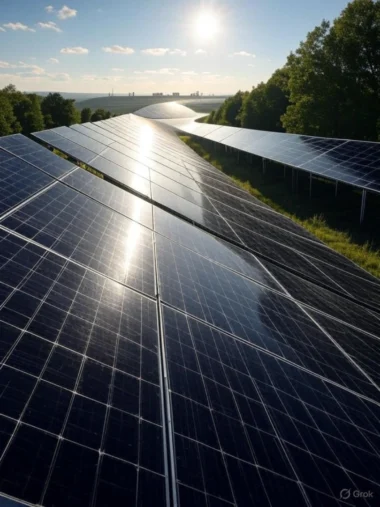Introduction
Forests are critical ecosystems that regulate the global climate, store carbon, and support biodiversity. However, unsustainable logging, land-use conversion, and forest degradation have significantly reduced global forest cover, contributing to greenhouse gas (GHG) emissions and biodiversity loss. Sustainable forestry practices aim to balance ecological integrity with economic viability, ensuring long-term forest productivity, habitat preservation, and climate resilience.
Objectives of Sustainable Forestry
- Carbon Sequestration: Enhance natural carbon sinks to offset anthropogenic emissions.
- Biodiversity Preservation: Maintain habitat connectivity and species richness.
- Soil and Water Conservation: Prevent erosion, promote nutrient cycling, and protect watershed functions.
- Socioeconomic Sustainability: Provide livelihoods while conserving ecosystem services.
Core Sustainable Forestry Practices: In-Depth Technical Overview
1. Reduced-Impact Logging (RIL)
Definition:
RIL is a precision-oriented timber harvesting method that minimizes environmental damage while maintaining logging efficiency. It involves careful planning, directional felling, and minimized soil disruption.
Technologies Involved:
- Geospatial Mapping Tools: GPS, GIS, and UAVs for tree mapping and terrain analysis.
- LiDAR Scanning: 3D laser scanning of forest structure and topography.
- Remote Sensing: Satellite imagery (e.g., NDVI) to assess vegetation health before and after logging.
- Onboard Logging Sensors: IMUs, wheel encoders, and real-time GPS in logging machinery.
Tools Used:
- Harvest Planning Software: e.g., Open Foris, Remsoft, SORTIE-ND.
- Directional Felling Apps: Tablet-based guidance systems for saw operators.
- Skid Trail Optimization Systems: Algorithms that plan routes to reduce soil compaction.
Frameworks:
- FAO’s Code of Practice for Forest Harvesting
- World Bank RIL Guidelines
- FSC RIL-V Carbon Verification Protocol
2. Agroforestry Integration
Definition:
Agroforestry combines trees, crops, and/or livestock to increase biodiversity, improve soil quality, and boost carbon sequestration on multifunctional landscapes.
Technologies Involved:
- Precision Agriculture Systems: GPS-based seed placement and soil sensors.
- Soil Health Sensors: EC, pH, and moisture probes for real-time nutrient status.
- Remote Weather Stations: Microclimate tracking for plant-soil-water balance.
Tools Used:
- Agroforestry Design Software: e.g., WaNuLCAS, Agroforestry Design Tool (AFDT).
- Satellite Monitoring Platforms: MODIS, Sentinel-2 for canopy dynamics.
- GIS-Based Suitability Models: For selecting optimal species per site.
Frameworks:
- ICRAF Guidelines for Sustainable Agroforestry
- UNFCCC Agroforestry Mitigation Protocols
- World Agroforestry Network Tools
3. Assisted Natural Regeneration (ANR)
Definition:
ANR enhances forest regrowth by managing natural seedling recruitment rather than active planting, making it cost-effective and ecologically aligned.
Technologies Involved:
- WSNs (Wireless Sensor Networks): To monitor microclimate (temperature, humidity, soil moisture).
- Camera Traps & Drones: For wildlife tracking and canopy development monitoring.
- Canopy Gap Analysis: Through UAV photogrammetry.
Tools Used:
- Seedling Monitoring Apps: Custom Android-based field forms (ODK, KoboCollect).
- Fire-Resistant Barriers: Embedded temperature sensors with remote alerting systems.
- Crowdsourced Biodiversity Mapping: Community-based GIS mapping tools.
Frameworks:
- UN REDD+ Restoration Standards
- IUCN’s Forest Landscape Restoration (FLR) principles
- FAO ANR Implementation Protocols
4. Selective Silviculture and Rotation Management
Definition:
Involves strategic harvesting, spacing, and species selection to maintain forest health, productivity, and biodiversity over multiple growth cycles.
Technologies Involved:
- Forest Growth Simulation Models: e.g., FORECAST, SILVA, FORMIND.
- Tree Health Sensors: Dendrometers, chlorophyll meters.
- AI-Based Yield Forecasting: LSTM models for long-term planning.
Tools Used:
- Portable Dendrometers and Clinometers: For DBH and tree height measurement.
- Canopy Monitoring Systems: LiDAR + AI to assess crown health and leaf area index.
- Decision Support Systems (DSS): ForestManager, C-FORMS.
Frameworks:
- Continuous Cover Forestry (CCF) Guidelines
- National Silviculture Certification Systems
- ITTO Criteria for Sustainable Silviculture
5. Forest Certification and Digital Traceability
Definition:
A compliance mechanism that ensures forest products come from responsibly managed sources and their supply chain is transparent.
Technologies Involved:
- Blockchain Technology: For immutable record-keeping and fraud prevention.
- RFID and NFC Tags: For log tracking from forest to sawmill.
- QR Code Serialization: Traceability for final wood products.
Tools Used:
- Traceability Platforms: ChainPoint, GeoTraceability.
- Mobile Forest Inventory Apps: Timber ID tracking with GPS-linked logging.
- Field Scanners: NFC-enabled readers to log wood origin in real-time.
Frameworks:
- Forest Stewardship Council (FSC)
- Programme for the Endorsement of Forest Certification (PEFC)
- Voluntary Carbon Standards (Verra, Gold Standard) for verified carbon offsets.
Climate and Biodiversity Monitoring Systems: Technical Overview
Climate and biodiversity monitoring systems are integrated technological frameworks designed to collect, analyze, and interpret environmental data for assessing ecological health, tracking climate change, and guiding conservation strategies. These systems typically deploy multi-sensor networks, remote sensing, and data analytics platforms for real-time or longitudinal ecosystem monitoring.
1. Technologies and Architectures Involved
A. Wireless Sensor Networks (WSNs)
- Description: WSNs consist of spatially distributed autonomous sensors that monitor physical or environmental conditions.
- Architecture:
- Sensor Nodes → Data Transmission Units → Gateways → Edge/Cloud Servers
- Protocols: ZigBee, LoRaWAN, NB-IoT, 6LoWPAN
B. Remote Sensing Systems
- Satellite- and drone-based platforms that gather large-scale climate and habitat data.
- Resolutions: Optical, Thermal, Infrared, Radar
- Examples:
- Satellites: Sentinel-2 (ESA), Landsat 8/9 (NASA), MODIS, PlanetScope
- Drones/UAVs: Equipped with LiDAR, multispectral, or hyperspectral cameras
C. Internet of Things (IoT) Integration
- Allows real-time communication between sensors and cloud systems.
- IoT Gateways: Raspberry Pi 4, BeagleBone Black, Espressif ESP32 (with LoRa/Wi-Fi)
- Supports MQTT, CoAP, RESTful APIs
2. Sensors Used in Climate Monitoring
| Parameter | Sensor Name / Type | Measurement Range |
|---|---|---|
| Temperature & Humidity | DHT22, BME280, SHT31 | -40 to 125°C; 0–100% RH |
| Atmospheric Pressure | BMP388, MS5611 | 300 – 1100 hPa |
| Rainfall / Precipitation | Tipping Bucket Rain Gauge, RG11 Optical | 0.2 mm increments |
| Wind Speed & Direction | Davis 6410, RM Young 05103 | 0–100 m/s |
| Solar Radiation (PAR/UV) | Apogee SQ-500 (PAR), ML8511 (UV) | 0–2000 µmol/m²/s (PAR) |
| CO₂ and GHG Concentration | MH-Z19B (CO₂), SenseAir S8, AQM65 Suite | 0–5000 ppm CO₂, 0–1000 ppb CH₄ |
| Soil Moisture & Temp. | Decagon EC-5, TDR sensors, DS18B20 | 0–100% VWC; -55 to 125°C |
| Air Quality (PM, VOCs) | PMS7003 (PM2.5/10), SGP30, CCS811 | PM1–10, VOCs, NH₃, CO |
| Noise Pollution | SPH0645LM4H MEMS Microphones | 20–120 dB SPL |
| Light Intensity | BH1750, TSL2561 | 0–65,000 lux |
3. Sensors Used in Biodiversity Monitoring
| Purpose | Sensor / Tool | Functionality |
|---|---|---|
| Camera Traps | Bushnell Core DS, Reconyx HyperFire 2 | Wildlife detection with PIR-triggered image capture |
| Bioacoustic Sensors | AudioMoth, Song Meter Mini | Monitor bird/mammal/insect calls |
| Passive Infrared Sensors (PIR) | HC-SR501, Panasonic AMN32111 | Animal presence detection through motion |
| GPS Collars for Tracking | Lotek, Vectronic GPS Collars | Long-term tracking of animal migration |
| RFID for Tagging | UHF RFID tags with RWD-Q9 readers | Monitoring tagged species or plants |
| LiDAR (Drone/UAV-Based) | Velodyne VLP-16, RIEGL miniVUX | Canopy structure, terrain & biomass assessment |
| Water Quality Monitoring | YSI EXO2, Atlas Scientific pH/DO sensors | Temperature, turbidity, pH, dissolved oxygen |
4. Software Platforms and Analytical Tools
A. Data Acquisition and Logging
- Arduino IDE / Python Scripts: For local sensor interfacing and logging
- Node-RED: Visual tool for wiring together IoT devices and services
- Open Data Kit (ODK): For mobile biodiversity data collection
B. Geospatial and Satellite Image Processing
- QGIS / ArcGIS: Geospatial analysis and visualization
- Google Earth Engine: Remote sensing data analysis and cloud computation
- SNAP Toolbox (ESA): Processing Sentinel satellite data
C. Machine Learning & AI for Pattern Detection
- TensorFlow, PyTorch: Species detection from images/audio
- scikit-learn, XGBoost: Climate prediction, anomaly detection
- R Packages: caret, randomForest for ecological modeling
D. Biodiversity & Climate Databases (Interoperability Tools)
- GBIF API: Global Biodiversity Information Facility
- iNaturalist API: Citizen science observations
- WorldClim, CHELSA: Climate raster datasets for modeling
- eBMS: European Butterfly Monitoring Scheme datasets
5. Cloud Platforms and Dashboards
| Platform | Features |
|---|---|
| ThingSpeak | Real-time sensor data visualization and MATLAB analytics |
| Amazon AWS IoT Core | Secure MQTT-based data pipelines, edge analytics |
| Google Cloud IoT Core | Scalable device management and telemetry processing |
| Grafana + InfluxDB | Time-series database and interactive dashboards |
| ODK Central / KoboToolbox | Cloud-based biodiversity data collection and visualization |
6. AI/ML Use-Cases in Monitoring Systems
- CNNs for wildlife recognition in images (camera traps)
- LSTM models for time-series forecasting of CO₂, rainfall
- Sound classification models for species call recognition (via MFCC features)
- Anomaly detection for detecting invasive species or fire-prone zones
Sustainable Forestry Implementation: Step-by-Step Process
Step 1: Baseline Assessment and Forest Inventory
Purpose:
To evaluate the existing forest conditions, species diversity, carbon stocks, soil quality, and socio-economic dependencies.
Activities:
- Remote sensing analysis using satellite imagery (e.g., Sentinel-2, Landsat 9)
- LiDAR mapping to assess forest canopy density and topography
- On-ground surveys using mobile GIS tools (e.g., Open Data Kit, KoboToolbox)
- Biodiversity baseline surveys using camera traps, acoustic sensors, and species counts
Tools & Technologies:
- GIS software: QGIS, ArcGIS
- Inventory tools: ForestPlot, Collect Earth
- Drone-based mapping: UAVs with multispectral and RGB cameras
Step 2: Forest Zoning and Land-Use Planning
Purpose:
To categorize forest areas based on usage — conservation, limited harvesting, community use, restoration.
Activities:
- Overlay socio-environmental layers using geospatial modeling
- Identify High Conservation Value (HCV) zones and buffer areas
- Plan wildlife corridors and reforestation zones
Tools & Technologies:
- Land-use modeling: CLUE-S (Conversion of Land Use and its Effects at Small regional extent)
- Spatial Multi-Criteria Analysis (SMCA) for planning
- Community GIS mapping for participatory zoning
Step 3: Sustainable Harvest Planning
Purpose:
To define sustainable logging practices that ensure regeneration and minimize ecological disruption.
Activities:
- Estimate Annual Allowable Cut (AAC) based on forest growth models
- Mark and tag trees using RFID/NFC tags and GPS logging devices
- Schedule selective logging in staggered cycles (e.g., Reduced Impact Logging – RIL)
Tools & Technologies:
- Forest growth simulators: FORMIND, SORTIE-ND
- Timber tracking systems: Chain-of-Custody (CoC) platforms with QR codes
- Laser rangefinders, increment borers for tree measurements
Step 4: Reforestation and Afforestation Programs
Purpose:
To restore degraded lands, improve carbon sequestration, and reintroduce native species.
Activities:
- Seedling propagation using native, disease-resistant species
- Drone seeding in inaccessible or steep terrain
- Agroforestry integration in buffer zones for socio-economic benefits
Tools & Technologies:
- Nursery management software: SMARTSeed, OpenForis
- Automated drones for aerial replanting
- IoT soil sensors: Decagon EC-5, PlantLink for monitoring growth conditions
Step 5: Climate and Biodiversity Monitoring
Purpose:
To continuously assess the health of the forest ecosystem, species richness, and climate response.
Activities:
- Install environmental sensor networks for real-time data collection
- Deploy camera traps and acoustic sensors for wildlife activity
- Periodically evaluate tree cover, GHG flux, and biomass
Tools & Technologies:
- IoT platforms: ThingSpeak, LoRaWAN-based sensor hubs
- Biodiversity tools: AudioMoth (bioacoustics), GPS collars
- Data analysis: Google Earth Engine, R/Python-based ML models
Step 6: Certification and Compliance Audits
Purpose:
To ensure the forest management practices align with sustainability standards and legal requirements.
Activities:
- Apply for certifications (e.g., FSC, PEFC)
- Conduct third-party audits of harvesting and regeneration cycles
- Monitor compliance with local and global forest policies
Tools & Technologies:
- Certification platforms: FSC Auditor Toolkit, ISEAL Alliance tools
- Blockchain-based tracking for transparency in supply chains
- Audit management software: AuditBoard, iAuditor
Step 7: Community Engagement and Benefit Sharing
Purpose:
To integrate local communities in forest governance and ensure equitable benefit-sharing.
Activities:
- Conduct Free, Prior, and Informed Consent (FPIC) sessions
- Train communities in participatory monitoring and NTFP (Non-Timber Forest Products) harvesting
- Establish forest cooperatives and payment-for-ecosystem-services (PES) schemes
Tools & Technologies:
- Participatory mobile apps: Mapeo, Sapelli Toolkit
- Digital benefit-sharing ledgers (e.g., blockchain for transparency)
- Feedback platforms: Interactive dashboards for local monitoring
Step 8: Reporting, Analytics, and Policy Feedback
Purpose:
To synthesize monitoring data into actionable insights and inform policymaking and adaptive management.
Activities:
- Generate sustainability KPIs: Carbon sequestration, biodiversity index, soil quality
- Feed data into national forest inventories or REDD+ MRV systems
- Produce policy briefs and adaptive management plans
Tools & Technologies:
- Dashboards: Grafana, Power BI
- Climate modeling software: CMIP6-compatible tools
- Interoperable APIs: Open standards for government reporting platforms (e.g., Global Forest Watch)
Benefits and Sustainability Impact of Sustainable Forestry Practices
1. Climate Change Mitigation
Carbon Sequestration
- Sustainable forests act as major carbon sinks, absorbing atmospheric CO₂ through photosynthesis and storing it in biomass and soils.
- Avoids emissions from deforestation and forest degradation (REDD+ aligned strategies).
Impact:
- Mature forests can sequester between 1.1 to 2.6 tons of CO₂ per hectare per year, depending on species and region.
- Countries with afforestation programs report up to 30% carbon offset contributions to their NDCs (Nationally Determined Contributions).
2. Biodiversity Conservation
Habitat Preservation
- Conservation zoning and low-impact logging protect the habitats of endangered flora and fauna.
- Restored corridors allow safe wildlife migration and genetic diversity maintenance.
Impact:
- Up to 70% reduction in biodiversity loss in forests managed with ecosystem-based conservation strategies.
- Greater resilience to invasive species and climate shocks due to preserved ecological integrity.
3. Ecosystem Services Enhancement
Soil and Water Protection
- Tree cover prevents soil erosion, enhances water retention, and reduces flooding and landslide risks.
- Riparian buffer zones maintain clean water supplies for communities and downstream ecosystems.
Impact:
- Studies show up to 40% reduction in sediment runoff in areas with sustainable canopy management.
- Forested watersheds improve water purification and reduce treatment costs for local utilities.
4. Economic Viability and Livelihoods
Sustainable Timber and Non-Timber Forest Products (NTFPs)
- Long-term supply of certified timber ensures economic returns without ecological degradation.
- Local communities earn from resin, honey, mushrooms, medicinal plants, bamboo, and more.
Impact:
- Certified sustainable timber markets can fetch 20–30% higher prices due to eco-labeling.
- NTFP harvesting provides up to 50% of rural incomes in forest-dependent communities.
5. Community Empowerment and Social Equity
Participatory Governance
- Involving indigenous and local populations promotes inclusive decision-making and equitable benefit-sharing.
- Ensures compliance with Free, Prior, and Informed Consent (FPIC) principles.
Impact:
- Community-managed forests have 20–30% higher regeneration success rates.
- Legal recognition of indigenous land rights leads to better conservation outcomes and reduced deforestation.
6. Land Restoration and Circular Economy Integration
Rehabilitation of Degraded Land
- Afforestation and assisted natural regeneration (ANR) reclaim degraded land for ecological and economic functions.
- Use of biochar and organic amendments improves soil health and circular carbon cycling.
Impact:
- Over 25 million hectares globally restored through community forestry since 2000.
- Forest-based circular practices promote zero-waste bioeconomy models.
7. Disaster Risk Reduction
Forest-Based Resilience
- Forests act as natural buffers against climate extremes such as heatwaves, floods, and windstorms.
- Mangrove and coastal forests reduce cyclone damage and shoreline erosion.
Impact:
- Forested coasts can reduce storm surge impact by 50–80%.
- Urban forestry reduces heat island effect and lowers local temperatures by up to 4°C.
8. Monitoring, Reporting, and Transparency
Data-Driven Decision Making
- Technologies such as IoT sensors, AI, satellite monitoring, and blockchain ensure transparent, real-time tracking of forestry operations.
- Improved compliance with international climate and biodiversity targets.
Impact:
- Integration with REDD+ MRV systems contributes to national and global emissions tracking.
- Use of AI and drones reduces manual monitoring costs by up to 60%.
Conclusion
Sustainable forestry practices represent a pivotal intersection between climate action, ecosystem restoration, and resource management. By leveraging technology such as remote sensing, AI, and blockchain, these practices can ensure the long-term viability of forests as carbon sinks and biodiversity hotspots. As the pressure to meet global climate targets intensifies, scalable and verifiable sustainable forestry models will play a crucial role in balancing ecological resilience with human development.



